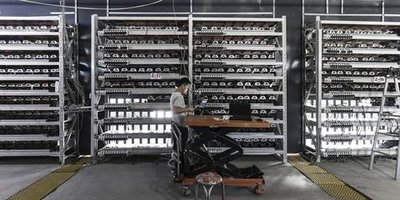The cryptocurrency mining landscape has evolved tremendously over the past decade, transforming from a niche hobby for tech enthusiasts into a significant, multi-billion dollar industry. One of the central figures in this ecosystem is the Whatsminer M70S, a mining rig that many enthusiasts and investors have turned to while contemplating their next steps in Bitcoin mining. But is it still profitable? To answer this, we must navigate through various factors, including the technological advancements in mining machines, the fluctuating market dynamics of Bitcoin, and the role of mining machine hosting.

First, let’s analyze the Whatsminer M70S itself. Known for its impressive hash rate capabilities, the M70S can reach approximately 100 TH/s, a specification that notably enhances its mining output. This rig operates on 2200W and is designed to be energy efficient, a critical factor in determining profitability margins. In a world where electricity costs can significantly eat into profits, the M70S offers a balance that could potentially lure miners back into the fold, especially as Bitcoin continues to hover around the elusive threshold of $60,000.
Moreover, we cannot overlook the impact of mining machine hosting services. Hosting allows individual miners to place their machines in a facility that provides optimal conditions for performance and uptime, often at lower energy costs. In cities where electricity rates are more competitive — or in regions harnessing renewable energy sources — miners can maximize their returns. Thus, investing in the Whatsminer M70S, combined with a reliable mining hosting service, could provide the leverage needed for profitability in today’s market.

However, if the industry has taught us anything, it is that volatility reigns supreme. Bitcoin’s price can swing wildly within days, influenced by market sentiment, regulatory news, or macroeconomic factors—such as inflation and interest rate changes. While some cryptocurrency advocates remain steadfast about Bitcoin’s long-term potential, these short-term fluctuations can deter new miners from entering the fray. This level of uncertainty necessitates a careful cost-benefit analysis for any potential investor looking at the M70S or similar mining rigs.
Diversification in mining operations is becoming increasingly important. Just focusing on Bitcoin may not be the most prudent strategy. Miners are now considering altcoins like Ethereum and Dogecoin for more frequent returns. The mining landscape is peppered with discussions about which currencies might offer the best profitability, and understanding these dynamics is pivotal. For instance, Ethereum’s shift to a proof-of-stake model has altered the mining paradigm and forced miners to recalibrate strategies. It incites a question — should one hold onto their M70S strictly for Bitcoin, or should they also prepare their hardware for potential shifts towards mining other currencies?
Investment in ASIC miners, like the Whatsminer M70S, also requires a holistic view of hardware depreciation. As newer models are launched, existing rigs often see a rapid decline in value and performance output. Keeping this point in mind can help mitigate losses. Mining machines can become obsolete within a few years; hence, it becomes critical to assess industry trends and technology before making a sizeable investment. The ongoing advancements hint at a future where even more efficient mining rigs may enter the market, rendering previous models less financially viable.

Community engagement and networking are also critical components of the equation. The mining community often shares insights into the latest happenings, tips for best practices, and even secret hacks to improve efficiency and profitability. The rise of forums, social media groups, and online meetups allows miners to exchange experiences and strategies, creating a sense of camaraderie in this decentralized world. With platforms discussing the merits of different mining rigs and techniques, insights into the profitability of the M70S can become much clearer.
In conclusion, while the Whatsminer M70S holds potential for profitability, especially when paired with optimal hosting solutions, prospective miners must navigate a myriad of external and internal factors. Each individual’s situation—with varying access to capital, electricity costs, and market knowledge—will result in vastly different outcomes. Hence, before embarking on this venture, arm oneself with comprehensive insights into market dynamics, electrical costs, and community wisdom to make an informed choice about the future of mining Bitcoin or any currency for that matter.
Leave a Reply